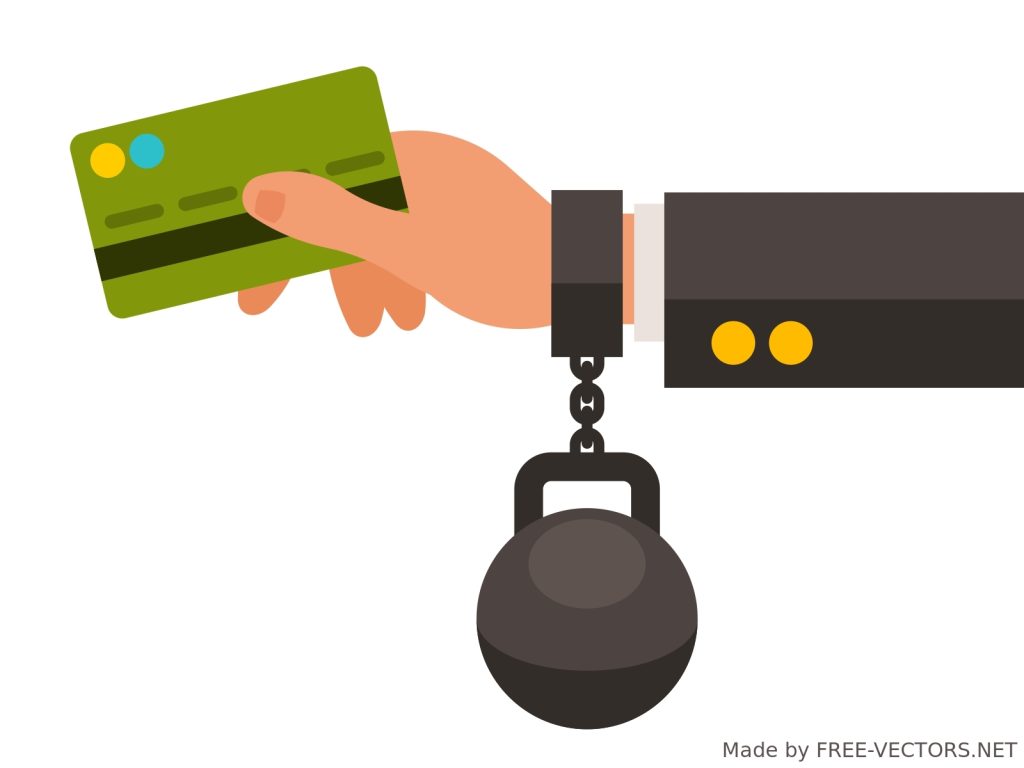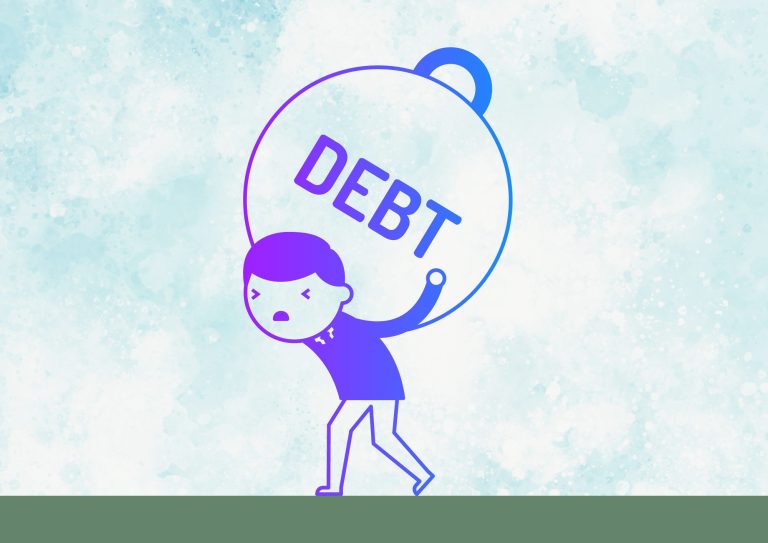Financial debt is the obligation to pay money to an individual, company, or establishment where you borrowed funds. You had an agreement with the lender where he had given you some money and you promised to return it in the future. You, the borrower, and the lender had come to a mutual understanding of the specific conditions of the debt, such as interest rates and repayment schedules.
Usually, the amount of money you pay back is more than what you borrowed. This is because credit providers offer a service that comes with a fee. They work out the fee by adding a percentage of what you borrowed to your monthly installments, and it’s called interest.
How does debt arise?
When you buy something with cash, you exchange money for the item and finish the transaction. However, when you buy something on credit or with a loan, you agree to pay for it later, most likely at interest. Now you have both the item and the debt.
Debt encompasses various financial tools like loans, credit card balances, mortgages, bonds, and similar commitments. These financial arrangements allow people and companies to access funds for multiple reasons, like buying property, funding education, or expanding businesses.
Good vs. bad debt
Debt can be compared to a fire; if used responsibly, it can benefit you. It can help you achieve important goals. However, if it is not managed properly, it can cause trouble. In simple terms, there are good debts and bad debts.
Using debt to invest in your future can be beneficial. Consider the doctor who financed his medical education with a student loan. He couldn’t have gained those talents and achieved that degree without incurring some debt. He now runs his practice, touches many lives, and employs dozens of people. This is an example of good debt.
If you pay for my clothes every weekend using debt, such as your credit card, you will have to repay the cost of those outfits as well as the loan’s fees and interest. This is an example of a terrible debt. Debt can accumulate and become harmful, especially if you cannot afford to repay it completely.
Kinds of debt
1. Consumer debt
The majority of this debt is accumulated through credit cards. When you use a credit card, you are effectively borrowing money from the credit card company. The credit card company pays the business first, and then you receive a monthly bill. If you pay the entire account within 30 days, you will not incur any debt interest. However, if you do not pay the sum within 30 days, interest will be applied to your debt.
Assuming a credit card’s annual interest rate is 25%, a $100 transaction may become $125 just a year later. Credit cards normally have a maximum charge amount, known as a credit limit.
Personal loans are unsecured loans issued by financial institutions. These loans can be used to fund your needs or wants, like home renovations or going on a lavish vacation. Personal loans come with fixed terms and interest rates, enabling borrowers to manage their finances more efficiently.
2. Student loan debt
Such loans allow you to pay for college expenses while deferring repayment until after you graduate. The federal government typically backs or pays for the majority of loans.
Student loan debt can be considered good debt if you’re using it to gain skills that will land you a more valuable opportunity than if you hadn’t gone to that school. Unfortunately, many people find out too late that the job they get with their college degree does not pay enough to justify the debt. Some students do not graduate, yet they must still repay their student loans.
3. Car loans
These loans allow you to buy a car and pay off the amount in equal monthly installments over a few years. For automobile loans, you wind up with a loan that is more than the amount for which you could sell the car. Banks and car dealers typically offer these loans, which do not cover the entire buying price of the vehicle. This means that you must have some cash as a down payment or trade-in the value of your old car towards the purchase price of a new one.
4. Home loan or mortgage
A mortgage is like a car loan, where you put down some money upfront and borrow the rest. The main difference is that cars lose value over time, while homes typically increase in value. This makes a home loan a smart investment choice. While a house may be one of the priciest purchases you make, it also serves as an example of how debt can be beneficial.
However, use caution when it comes to car loans and home loans. These are examples of secured debt. The automobile and house serve as security for the debt. If you do not make your payments on time, the lender may take ownership of your car or home and sell it to someone else to get their money back.
5. Small business loans
These loans are designed to start, support, or grow small enterprises. They help business owners invest in and expand their companies.
6. Corporate Bonds
Big companies raise funds for different purposes by issuing corporate bonds. If you are a bondholder, you are paid interest at regular intervals. You also get back the initial investment when the bond reaches maturity.
How can I be responsible for debt?
First, avoid bad debt by not spending more money than you have or can afford to repay.
Second, pay for your purchase using cash. Many of the goods you can buy with debt can also be purchased with cash, especially if you intend to use them for a short time. Save for what you need and buy what you can afford.
The third and most ethical method to use debt is to make it work for you.
How do you get into debt?
- Overspending due to lack of financial knowledge, consumerism, or inadequate budgeting and saving strategies.
- Unforeseen circumstances and medical expenses like sudden sickness, accidents, medical treatments, home repairs, car breakdowns, or natural calamities can also lead to financial strain. You will have to borrow to cover these unexpected expenses if you do not have sufficient emergency savings.
- Lack of stable employment, job loss, or delays in wages will force you to take out short-term loans to make ends meet.
- Cunning strategies of the financial sector, like credit card companies, entice customers with readily available credit limits and attractive promotional deals.
The results of being in debt
- If you let your debts build up over time, you will have an increasing load of interest payments, leading to a higher total borrowing cost.
- Late payments or having high balances decrease credit scores. Therefore, your interest rates will increase, and you will have challenges obtaining credit.
- You can be stressed from worrying about managing payments, fear of losing money, and interacting with multiple lenders. You may find yourself in a constant state of financial pressure.

Efficient Strategies for Handling and Minimizing Debt
- Develop a budget and monitor your expenses. List all sources of income, then list your monthly spending. After this, you’ll subtract all expenses from the total income to calculate the amount of money that can be used to pay off debts.
- If you are looking to handle numerous debts, you should either:
- focus on paying off the debt with the highest interest rate first and making minimum payments on other debts. This is the debt avalanche strategy
- or
- prioritizes paying off the smallest debts first, without considering the interest rates associated with them. This is the debt snowball method.
- Talk with your creditors to adjust the loan terms. They can reduce the interest rates, extend the repayment period, and even waive late payment fees.
- Consult professionals to assist you in dealing with overwhelming debt. They’ll offer guidance on financial matters, help with budget planning, and suggest strategies for managing debt.
Conclusion
Borrowing money for things that have the potential to increase in value or generate income in the future is considered good debt. Before taking on debt, it’s important to consider how much it will cost in the long run and whether it will be a beneficial investment. If you determine that the debt will help you build wealth, look for loans with low-interest rates and short repayment terms. By using debt judiciously, paying it off quickly, and practicing disciplined spending, you can achieve true financial freedom and wealth.


